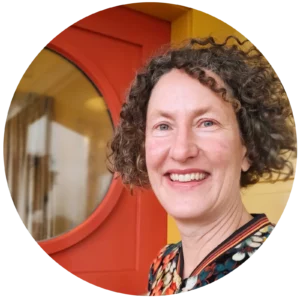Kiwi engineer Alex Shegay has witnessed the impressive performance of Japanese buildings in earthquakes, and he wants Aotearoa to benefit from similar technology.
Engineering Insights
Sheltering under a table as wine bottles shattered on the ground around him during an earthquake at his friend’s small wine bar, was not exactly how Alex Shegay had envisaged gaining earthquake experience in Japan.
Alex had gone to Sendai as a postdoctoral fellow to study the performance of reinforced concrete buildings in earthquakes. He later got a job in Tokyo as an assistant professor researching seismic protection systems for buildings. He became immersed in the world of Japanese engineering design, collaborating with numerous companies and universities, and making the most of full-scale shake table tests.
But some of the most powerful insights came from actual earthquakes. Looking up to the horizontal line drawn just below the third storey on coastal buildings near Sendai was surreal and shocking. The line marks the height that the tsunami reached after the Mw 9.0 Tōhoku earthquake in 2011. These buildings were still standing and being used – direct evidence of the effectiveness of Japanese engineering solutions.
The day after experiencing the Mw 7.3 earthquake in his friend’s wine bar (some bottles of wine were lost but not the expensive ones), Alex walked the streets of Sendai. He was amazed to see the occasional tile out of place but no major building damage. “If that earthquake had happened in Wellington or Auckland it would have been a catastrophic event. But not in Sendai. We need to learn from that.”
Lessons for New Zealand
Alex is adamant that New Zealanders have a lot to gain from collaborating with Japanese researchers, “buildings we build here may stand up in earthquakes, but they won’t necessarily be undamaged.” Japan has extensive experience using dampers and base isolators to protect buildings from intense shaking and increase the chances of them being fit for use after earthquakes.
Japan is also earthquake central – one of the most seismically active countries in the world – so there are numerous real-life examples of buildings that have performed well in earthquakes. We don’t have as much proof of that in Aotearoa New Zealand.
Coming Home
After four years investigating such technical topics as the performance of viscous dampers under long duration shaking and the effectiveness of repair of damaged reinforced concrete buildings, all while learning Japanese, Alex has returned to New Zealand. Ten steps away from the desk where he wrote his PhD thesis, he has a new desk where he works as a lecturer in the Civil and Environmental Engineering Department at Waipapa Taumata Rau University of Auckland.
Alex has come full circle, from student to staff member, not only with his university department, but also in his relationship with Te Hiranga Rū QuakeCoRE. Alex received a QuakeCoRE scholarship to fund the completion of his PhD. Now he’s involved in QuakeCoRE research as part of Disciplinary Theme 2, leading the effort of designing the test plan for internal components in buildings undergoing shake table tests.
Travel for Networking
But far from staying in the same professional circles, Alex advocates travel as essential for “opening up the mind and becoming a well-rounded researcher”. He had not thought about leaving New Zealand until he received a Fulbright-EQC Graduate Award in Natural Disaster Research that gave him an opportunity to spend a year at the University of Washington during his PhD. It was after his PhD that he headed to Japan.
Alex encourages postgraduate students to, “seek opportunities to spend time overseas – when you come back you’ll bring new ideas and, perhaps more importantly, new networks. For a small country like New Zealand, such networks are essential.”
The Work Begins
One of Alex’s goals for his time in Japan was to facilitate the sharing of Japanese research (often published in Japanese) for the benefit of other countries. Alex is now seeing that goal come to fruition with a Royal Society Catalyst: Seeding grant enabling Japanese and Kiwi colleagues to work together. He wants to apply Japanese solutions for retrofitting buildings with modern seismic protection systems here in New Zealand. He considers his real work is only just beginning.

